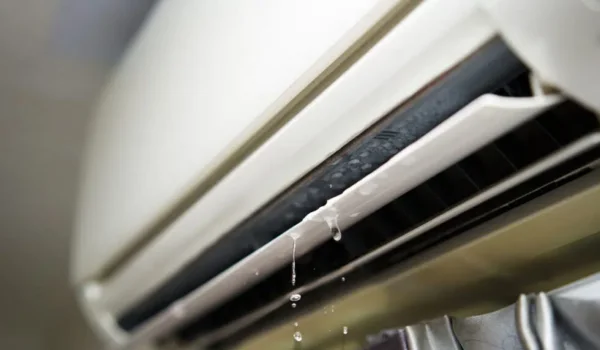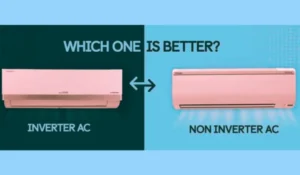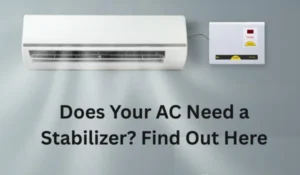Water leakage from an air conditioner is one of the most common and frustrating problems, especially during the summer when your AC is working overtime. As a tech and electronics expert who has personally fixed over two dozen AC units for friends, neighbors, and clients, I can tell you this: a leaking AC doesn’t always mean expensive repairs—but ignoring it can lead to mold, wall damage, and costly fixes.
I faced this exact issue in 2022 with my 1.5-ton split AC. Water started dripping from the indoor unit onto the floor. At first, I thought it was just condensation. But when the leakage didn’t stop after days of cleaning and filter maintenance, I decided to go deep into the problem.
In this guide, I’m sharing everything I learned and applied to fix AC water leakage issues—step-by-step, based on first-hand experience and expert knowledge, along with support from trusted sources like LG India, Daikin Service Manuals, Voltas FAQs, and appliance repair forums.
Why Does Your AC Leak Water?
Before we jump into the fixes, let’s understand why AC water leakage happens in the first place. When your AC runs, it pulls humidity from the air, which then condenses on the evaporator coil and drains out via a pipe. If any part of this process is blocked, broken, or misaligned, water starts leaking indoors.

Here are the top causes I’ve encountered:
- Clogged Drain Pipe
- Dirty Air Filters
- Improper Installation
- Low Refrigerant Levels
- Frozen Evaporator Coil
- Damaged Drain Pan
- Broken Pump (for cassette/ceiling ACs)
Now, let’s walk through how to fix each of these, with tools and tips from my own toolbox.
1. Clogged or Blocked Drain Pipe
Symptoms: Water dripping continuously from the indoor unit, especially after a few hours of use.
What I Did:
This was the most common issue I found. I once opened up the drain pipe of a leaking AC and found it clogged with dust, mold, and even a dead insect!
Fix:
- Turn off the AC and unplug it.
- Locate the drain pipe behind the indoor unit or near the outdoor unit.
- Use a wet/dry vacuum to suck out the blockage. Alternatively, push a flexible wire or use pressurized water (gently) to clear the pipe.
- Reconnect and test the unit.
👉 Pro Tip: Flush the drain pipe every 3–4 months, especially before peak summer.
2. Dirty or Blocked Air Filters
Symptoms: Weak airflow, AC working but cooling poorly, water dripping intermittently.
My Experience: I ignored filter cleaning for 2 months once—and the result? Condensation built up and started dripping. The reduced airflow led to excess moisture retention on the coil.
Fix:
- Open the front panel and remove the filters.
- Wash them gently under running water.
- Dry completely before reinstalling.
- 👉 Clean filters = Better cooling + less leakage.
3. Improper AC Installation (Especially Tilt)
Symptoms: Water leaks only from one side of the unit, usually near the electrical section.
What I Found: A new AC in my neighbor’s house was leaking after just one week. On checking the wall bracket, I noticed the indoor unit wasn’t tilted properly—the water wasn’t flowing toward the drain tray.
Fix:
- Use a spirit level to check the angle of the indoor unit.
- Ensure the back of the unit is slightly tilted (5–10°) toward the drain pipe.
- If required, reinstall the wall bracket correctly or adjust it.
Note: Always get AC installation done by a certified technician. It makes all the difference!
4. Frozen Evaporator Coil
Symptoms: Water leakage after the unit is turned off, visible frost or ice on coils.
What I Did: In one case, the refrigerant level was low and the filters were dirty. This caused the coil to freeze. When the unit turned off, the ice melted and overflowed, leading to leakage.
Fix:
- Turn off the AC and let the ice melt.
- Clean the filters and coils.
- Get a professional to check refrigerant levels if the freezing continues.
👉 Avoid running the AC at 16°C constantly—it stresses the coil.
5. Cracked or Rusted Drain Pan
Symptoms: Water pooling even after cleaning filters and pipes.
My Experience: In a 10-year-old AC, the drain pan was rusted and cracked. Water wasn’t flowing into the pipe—it was leaking directly into the room.
Fix:
- Open the indoor unit to inspect the drain pan.
- If it’s cracked or rusted, replace the pan (parts available from service centers).
- Apply waterproof sealant as a temporary fix.
6. Broken or Disconnected Drain Pipe
Sometimes the drain pipe gets dislodged or cracked, especially in window ACs or older split models.
Fix:
- Inspect the full length of the pipe.
- Reconnect if loose or replace it if damaged.
💡 I always keep a spare drain pipe roll and connectors at home—they’re cheap and useful.
7. Condensation Due to Poor Insulation
In humid areas, moisture can form on the AC casing or copper pipe, causing “sweating” and eventual water drops.
Fix:
- Wrap the copper pipe with proper Armaflex insulation foam.
- Avoid running the AC in “Fan Only” mode for too long in humid conditions.
When Should You Call a Professional?
- While 70–80% of leakage issues can be fixed with basic maintenance, you should call a technician if:
- Water leakage continues after cleaning
- You see excess ice formation
- There’s a refrigerant leak or gas smell
- AC is over 7–8 years old and shows multiple issues
Final Thoughts: Don’t Panic, Act Fast
Water leakage from your AC may look scary, but most of the time, it’s just a sign of neglect or minor blockage. With a bit of patience and the right tools, you can fix it yourself or prevent it in the first place.
My best advice: Clean your filters monthly, flush the drain pipe quarterly, and do a professional servicing once a year. It will save you money, damage, and summer headaches.
Have you faced AC water leakage before? Drop your story or question in the comments—I’d love to help.



